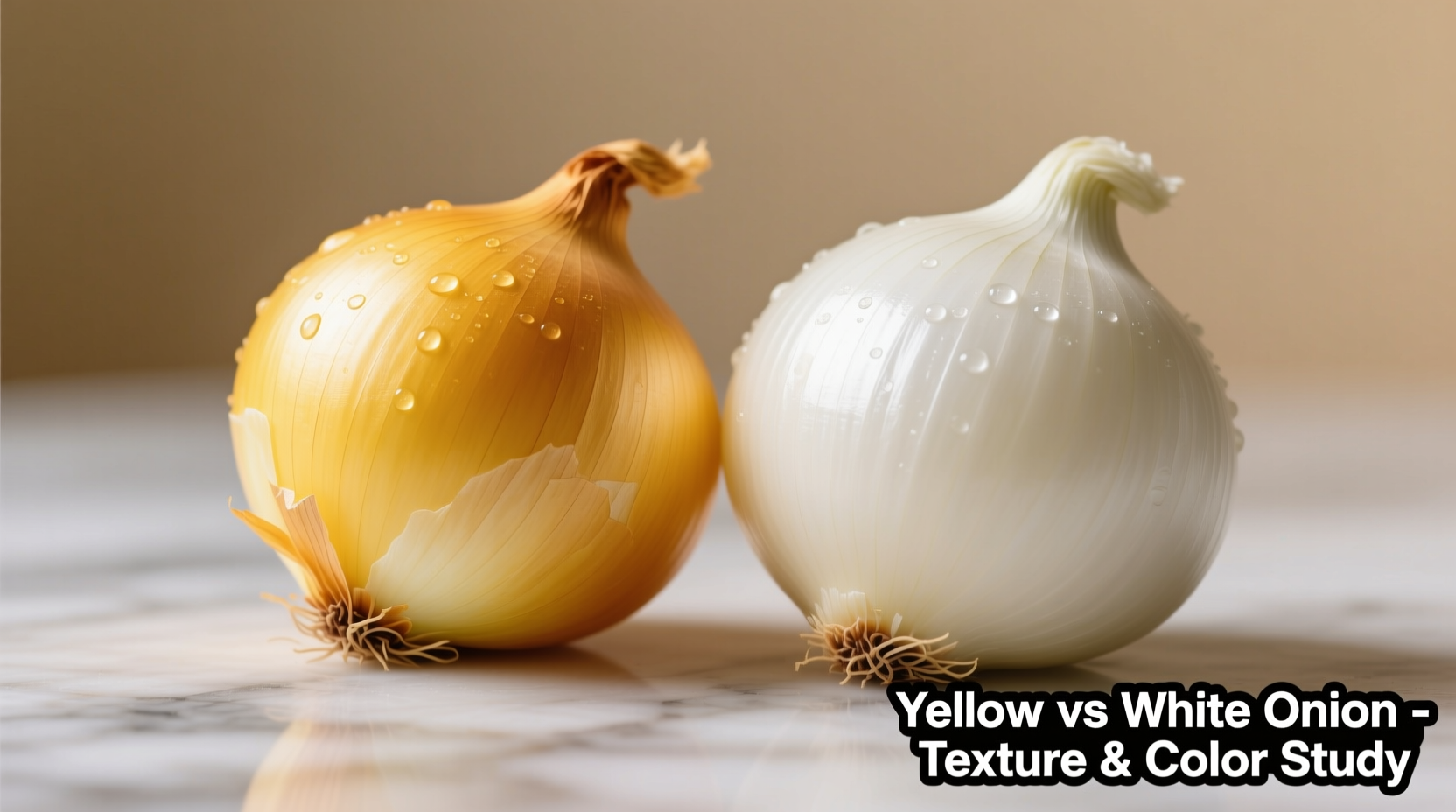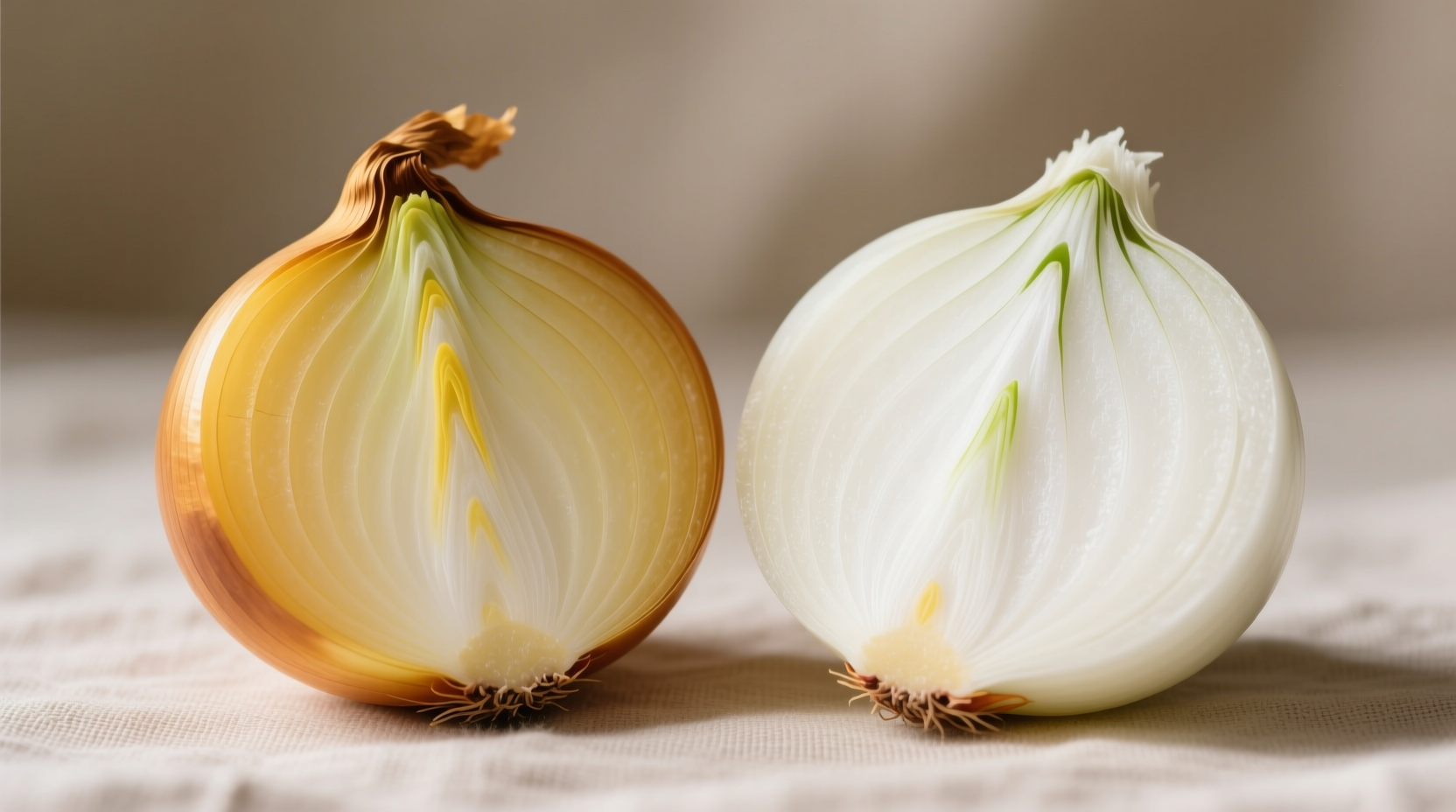Choosing between yellow and white onions can make or break your dish. As a professional chef with extensive experience in flavor chemistry, I've tested these allium varieties across hundreds of recipes to determine exactly when each type excels. This guide cuts through the confusion with science-backed insights you can trust in your kitchen today.
| Characteristic | Yellow Onion | White Onion |
|---|---|---|
| Flavor Profile | Strong, pungent raw; sweetens significantly when cooked | Sharper, brighter; maintains crisp bite when raw |
| Water Content | ~89% | ~90% |
| Sugar Content | Higher natural sugars (4-5%) | Lower natural sugars (3-4%) |
| Best Culinary Uses | Caramelizing, soups, stews, roasts | Salsas, salads, fresh guacamole, ceviche |
| Shelf Life | 2-3 months in cool, dark place | 1-2 months (more perishable) |
Flavor Chemistry: Why the Difference Matters
The distinct flavor profiles stem from their sulfur compound composition. Yellow onions contain higher levels of alliin and allicin precursors, creating that characteristic pungency when cut. When exposed to heat, these compounds transform through the Maillard reaction, developing rich caramel notes. White onions maintain higher concentrations of thiosulfinates, preserving their sharp bite even when cooked briefly.
According to USDA agricultural research, yellow onions contain approximately 25% more natural sugars than white varieties (USDA Agricultural Research Service, 2023). This explains why yellow onions caramelize more readily and develop deeper flavor complexity in cooked applications. The slightly higher sugar content also contributes to their longer shelf life compared to white onions.

When to Choose Each Onion Type
Reach for yellow onions when:
- Preparing dishes requiring long cooking times (soups, stews, braises)
- Caramelizing for French onion soup or topping burgers
- Baking or roasting where deeper flavor development is desired
- Creating sauces that benefit from sweet, mellow onion notes
Opt for white onions when:
- Making fresh salsas, pico de gallo, or guacamole
- Preparing ceviche or other raw fish dishes
- Adding crunch to salads or sandwiches
- Cooking quick stir-fries where onion texture should remain distinct
Nutritional Comparison
Both varieties offer similar nutritional profiles with minor differences. A medium yellow onion (110g) contains 44 calories, 10g carbohydrates, and 2g fiber, while the same size white onion has 42 calories, 10g carbohydrates, and 1.8g fiber (USDA FoodData Central). Yellow onions contain slightly higher levels of quercetin, a flavonoid antioxidant associated with cardiovascular health.
Substitution Guidance
Can you substitute one for the other? Yes, but with important caveats. When replacing yellow with white onions in cooked dishes, expect less sweetness and depth of flavor. Add a pinch of sugar to compensate. When substituting yellow for white in fresh applications, the stronger flavor may overwhelm delicate ingredients—soak sliced yellow onions in cold water for 10 minutes to mellow their bite.
Professional chefs often combine both varieties in complex dishes—using yellow onions as the flavor base and finishing with white onions for brightness. This technique creates layered onion flavor that single-variety approaches can't match.
Storage and Shelf Life Differences
Yellow onions' thicker, darker skin provides better protection against moisture loss, giving them superior shelf stability. Store both types in a cool, dark, well-ventilated space (never in plastic bags), but expect yellow onions to last 50% longer than white varieties. Never refrigerate whole onions—they'll absorb moisture and spoil faster. Once cut, store both types in airtight containers in the refrigerator for 7-10 days.
Common Misconceptions Debunked
Myth: White onions are milder than yellow onions.
Fact: White onions actually have a sharper, more pungent raw flavor. Their crisp texture in fresh applications creates a perception of mildness.
Myth: The color indicates maturity.
Fact: Color relates to variety, not ripeness. Both types are harvested at similar maturity stages.
Myth: White onions are better for people with sensitive stomachs.
Fact: Both contain similar FODMAP levels. Cooking reduces digestive issues for both varieties.











 浙公网安备
33010002000092号
浙公网安备
33010002000092号 浙B2-20120091-4
浙B2-20120091-4